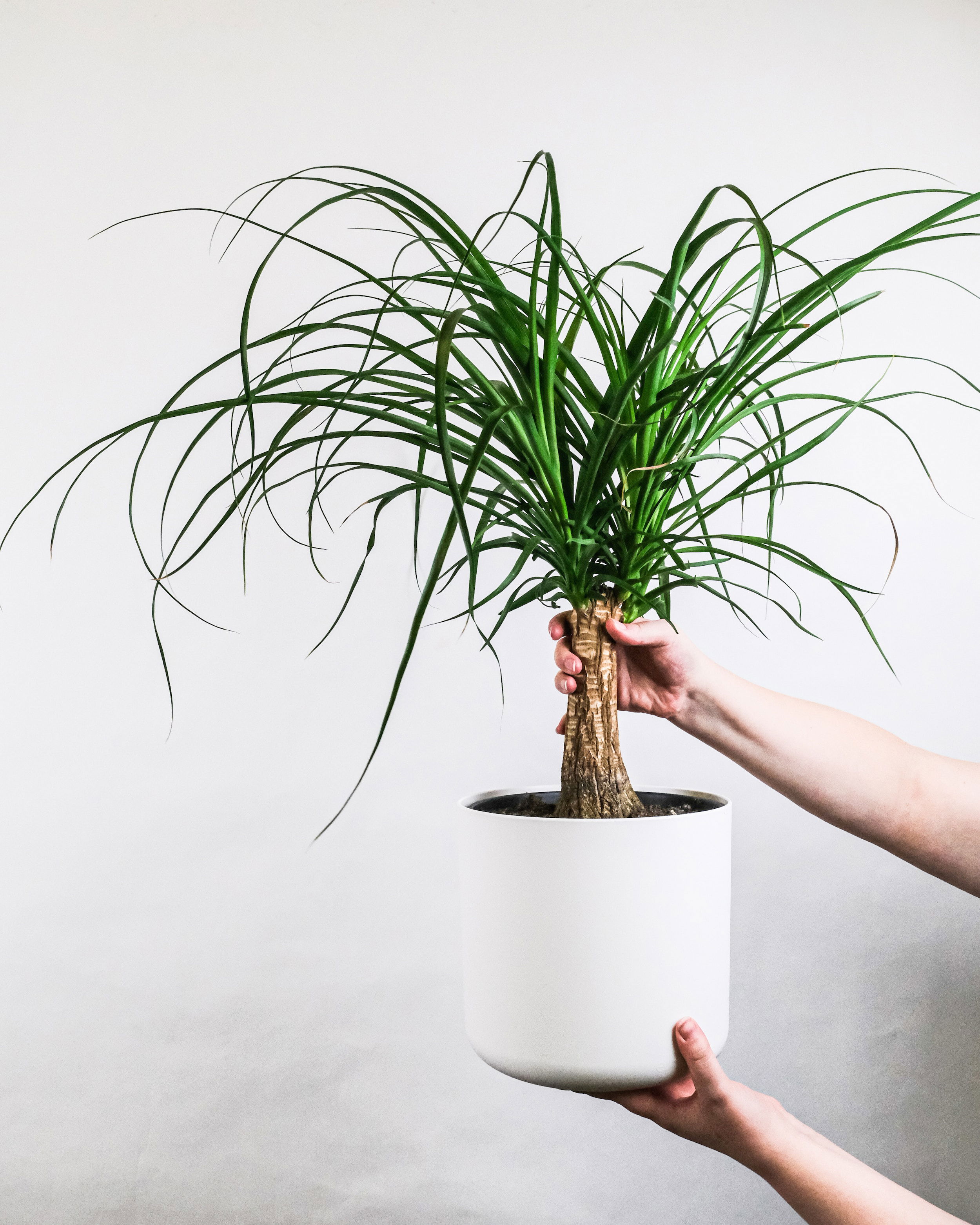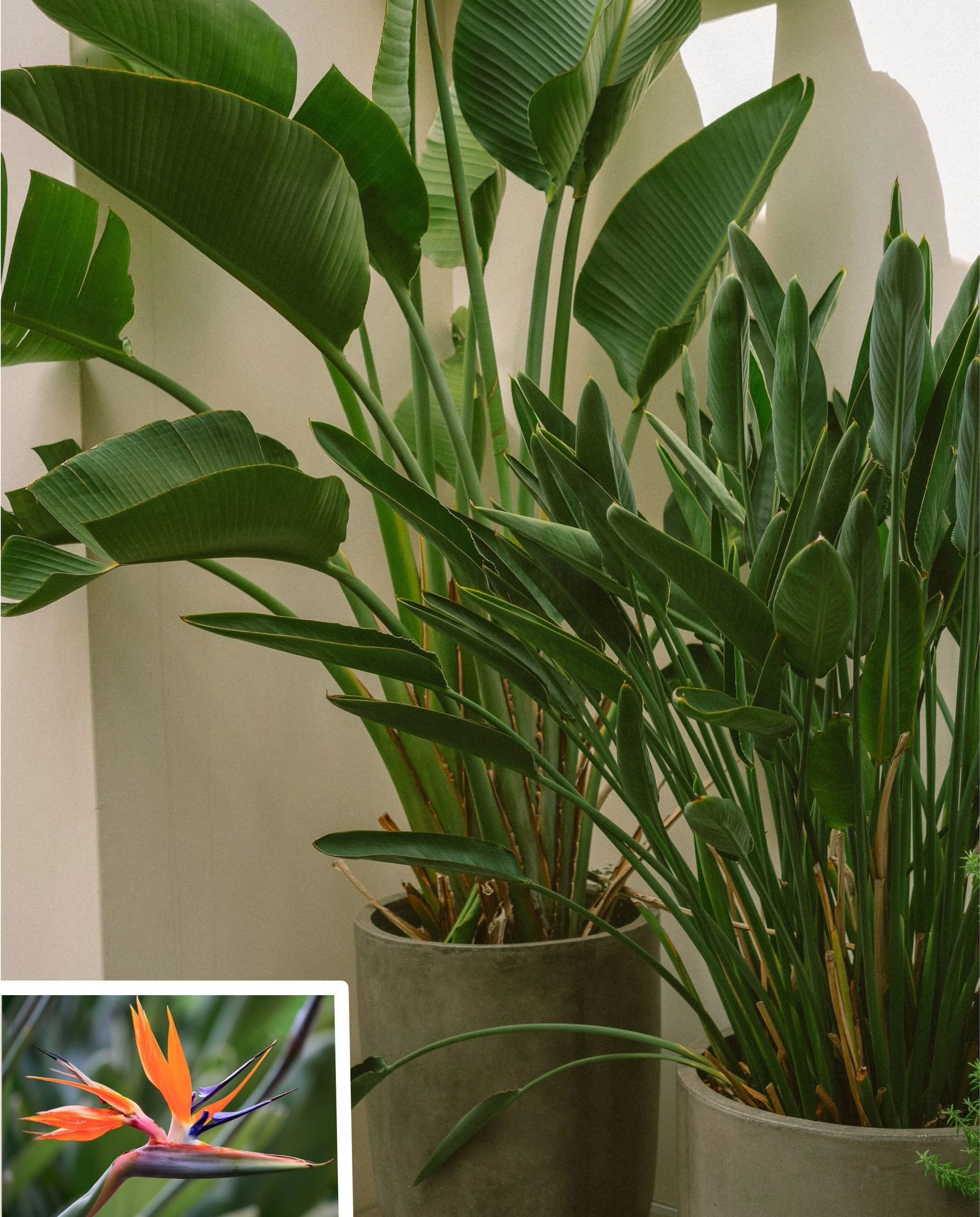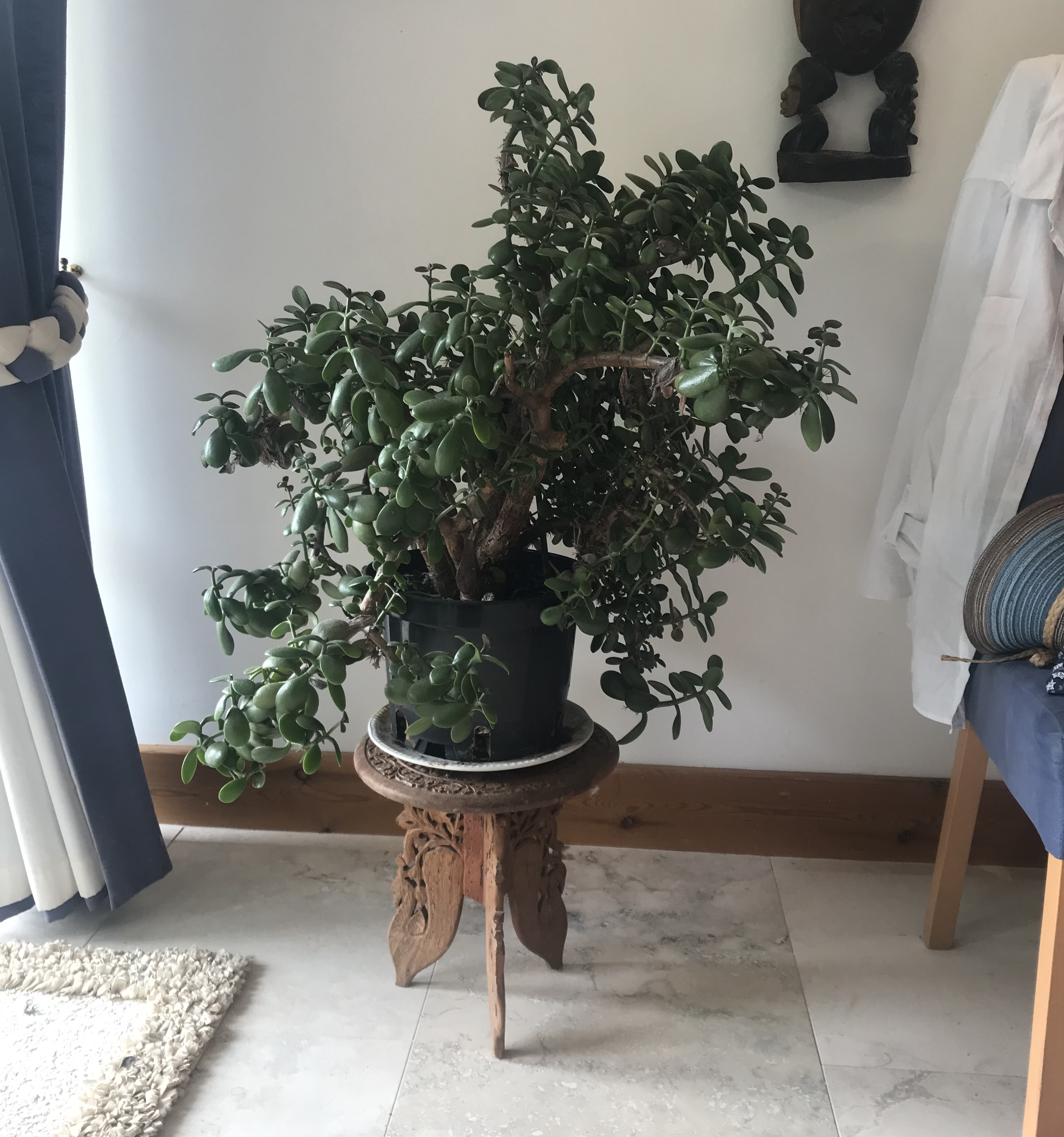Image Copyright: Vulcan Windows (UK)
Introduction
Conservatories are double-ended swords when growing houseplants. On one hand, they'll provide overhead natural lighting (the best angle of light for a plant to grow towards); however, their temperature fluctuations over the year will pose a challenge for some plants due to the hot summers and cold winters.
In this Top 10, THE HOUSEPLANT DOCTOR™ mentions ten potential options that can thrive in conservatories, along with providing a splash of colour either via their foliage or flowers!
Three Quick Tips for Conservatory Success
- During the cold period of late autumn to early spring, keep the plant's soil on the dry side to avoid disease. Root rot is common when the potting mix remains continuously wet, while the air temperature is lower than 12℃ (54℉).
- Once summer arrives, increase the frequency of watering to address the hotter temperatures that'll quickly dry out the potting mix. Unless the plant is a cactus or succulent, maintain evenly moist soil and fertilise every third water to promote new growth.
- All houseplants have a maximum temperature in which they can grow. If the temperatures of your conservatory regularly reach above 35℃ (95℉) in normal summer conditions, THE HOUSEPLANT DOCTOR™ recommends choosing the following plants that mention 'All Temperatures' in their description below!
Important Note: The plants mentioned below can survive down to around 7℃ (45℉), provided their soil is kept dry during these chilly spells. For conservatories that regularly dip below this limit, consider relocating them into your home until it warms up a little in mid-spring!
Which Plants Are Best For A Hot/Sunny Conservatory?
1. Indoor Yucca

Temperature Toleration: All temperatures (including below freezing)
Care Difficulty: Easy
Annual Growth: Slow (8cm per year)
Watering: Only rehydrate the soil once the top third dries out during the spring and summer. Reduce watering further during the colder months (autumn & winter). Remember: less is more with Yuccas.
Feeding: Fertilise every fourth time you water the soil with a 'Houseplant' labelled product.
Pruning: Generally not needed for height, but you can prune the tips of the leaves to remove their sharp edges. Prune older leaves once they become yellow.
Where to Buy: Garden centres, DIY stores & online stores.
Pet Friendly: No
2. Pelargoniums (Indoor 'Geraniums')

Temperature Toleration: 5° - 30℃ (40° - 86℉)
Care Difficulty: Easy
Annual Growth: Moderate (10-12cm per year)
Flowering Period: Late spring to early winter
Watering: Maintain evenly moist soil and always avoid dehydrating your Pelargonium.
Feeding: Fertilise every third time you water the soil with a 'Houseplant' labelled product.
Pruning: Prune the stems back by a third in spring to create new branches & more flowers in summer.
Where to Buy: Garden centres (outdoor section in spring & summer), DIY stores (outdoors) & online stores.
Pet Friendly: No
3. Mistletoe Cacti (Rhipsalis)
Temperature Toleration: 5° - 30℃ (40° - 86℉)
Care Difficulty: Easy
Annual Growth: Moderate (10-12cm per year)
Watering: Keep the soil on the drier side, watering once the top third dries out. Mistletoe Cacti are excellent at drought tolerance.
Feeding: Fertilise every third water, using a 'Houseplant' labelled product.
Pruning: Generally not needed, but you can reduce its overall length by a third when overgrown.
Where to Buy: Garden centres, DIY stores & online stores.
Pet Friendly: Yes
4. Bougainvillea
Copyright: Garden Gossip Facebook Group
Temperature Toleration: 5° - 30℃ (40° - 86℉)
Care Difficulty: Moderate
Annual Growth: Fast (12cm per year)
Flowering Period: Summer
Watering: Keep the soil reliably moist (especially in hot weather or while flowering). A resting period is needed in the autumn and winter, so reduce the frequency of watering slightly in the colder months.
Feeding: Fertilise every third time you water the soil with a 'Houseplant' or 'Tomato' labelled product.
Pruning: Prune the stems back by a third in either the winter or spring (December or late March) to create new branches & more flowers in the following summer.
Where to Buy: Garden centres (outdoor section in spring), DIY stores (outdoor section) & online stores.
Pet Friendly: No
5. Bird of Paradise (Strelitzia)
Plant Closest: Strelitzia reginae (orange flowers, pictured). Plant Furthest: Strelitzia nicolai (white flowers)
Temperature Toleration: All temperatures (above freezing)
Care Difficulty: Easy
Annual Growth: Fast (12cm per year)
Flowering Period: Any month of the year (Produces annual flowers once it is seven years old)
Watering: Bird of Paradise Plants are very drought tolerant; only rehydrate the soil when it becomes fully dry to the touch.
Feeding: Fertilise every fourth time you water the soil with a 'Houseplant' labelled product.
Pruning: Generally not needed except when removing old yellowing leaves or flowers.
Where to Buy: Garden centres, DIY stores & online stores.
Pet Friendly: No
6. Citrus Trees (Oranges, Limes & Lemons)
Temperature Toleration: All temperatures (above 8℃, 46℉)
Care Difficulty: Moderate to difficult
Annual Growth: Moderate (8-12cm per year)
Flowering & Fruiting Period: Fragrant flowers will appear in March & April, followed by the citrus fruit production immediately after.
Watering: Maintain moist soil during the spring and summer, while promoting slightly drier conditions in the colder months to replicate a dormancy period. Don't over-water from late autumn to early spring.
Feeding: Fertilise every third time you water the soil with either a 'Houseplant' or 'Citrus Tree' labelled product.
Pruning: Not always necessary, but feel free to prune the stems back by a third in autumn (after the last fruit has dropped) when over-grown.
Where to Buy: Garden centres, DIY stores & online stores.
Pet Friendly: No (Its fruits are edible to humans though)
7. Laurel Bay Leaf
Temperature Toleration: -5° - 28℃ (23° - 82℉)
Care Difficulty: Easy
Annual Growth: Moderate (8-12cm per year)
Watering: Similarly to Citrus Trees, Laurel Bays should be kept moist during the spring and summer, while being watered slightly less often in the colder months to replicate a dormancy period.
Feeding: Fertilise regularly; every third water with a 'Houseplant' labelled product.
Pruning: In late spring, prune any abnormally long stems back to maintain its original topiary shape.
Where to Buy: Garden centres (outdoor section), DIY stores (outdoors) & online stores.
Pet Friendly: No
8. Ponytail Palms (Beaucarnea/Nolina)

Temperature Toleration: All temperatures (including below freezing)
Care Difficulty: Easy
Annual Growth: Slow (2-5cm per year)
Watering: Due to its drought tolerant nature, the Ponytail Palm is excellent for both regularly hot conservatories and gardeners who forget to water.
Feeding: Every three months using a 'Houseplant' labelled product.
Pruning: Not needed except when pruning brown leaf-tips or dead foliage to improve its appearance.
Where to Buy: Garden centres, DIY stores & online stores.
Pet Friendly: Yes
9. Aeoniums (Treehouse Leaks)
Temperature Toleration: All temperatures (above 8℃, 46℉)
Care Difficulty: Easy
Annual Growth: Slow (3-6cm per year)
Watering: Only rehydrate the soil once it becomes fully dry. Don't overwater, especially during temperatures below 15℃ (49℉).
Feeding: Every three months using a 'Houseplant' or 'Cactus' labelled product.
Pruning: Not necessary, unless you want to reduce its height. Propagate the stem prunings in water to root and grow-on.
Where to Buy: Garden centres (large specimens are sold outdoors in spring/summer) & online stores.
Pet Friendly: Yes
10. All Desert Cacti & Succulents

Temperature Toleration: All temperatures (above 8℃, 46℉)
Care Difficulty: Easy
Annual Growth: Slow
Watering: Generally speaking, allow the soil to fully dry out before you re-water the plant. Don't overwater, especially during temperatures below 15℃ (49℉).
Feeding: Every three months using a 'Houseplant' or 'Cactus' labelled product.
Where to Buy: Supermarkets, garden centres, DIY stores & online stores.
Pet Friendly: Generally yes, but check each plant before purchasing.
11. (Extra!) Venus Fly Traps
Temperature Toleration: All temperatures (above 7℃, 44℉)
Care Difficulty: Moderate to Difficult
Annual Growth: Slow (six 'traps' per year)
Watering: Maintain moist soil at all times, avoiding any risk of dehydration. You can stand the plant in a saucer of standing water if you're a forgetful gardener. Use distilled or rain water.
Feeding: Do not use any fertiliser and instead allow it to catch flies (& other insects).
Pruning: Not needed. Keep any yellowing leaves on the plant until they fully brown-over.
Where to Buy: Garden centres, DIY stores & online stores.
Pet Friendly: Yes
12. (Extra!) Jade Trees (Money Trees)
Temperature Toleration: All temperatures (above 7℃, 44℉)
Care Difficulty: Easy
Annual Growth: Slow (3-7cm per year)
Watering: Only rehydrate the soil once the leaves begin to 'wrinkle'/ soften slightly. (The leaves should be plump whilst the plant is adequately hydrated).
Feeding: Every three months using a 'Houseplant' labelled fertiliser.
Pruning: Not needed unless it outgrows your desired size. Propagate any broken stems or healthy leaves that fall off placing them back into the soil to root.
Where to Buy: Supermarkets (sometimes), garden centres, DIY stores & online stores.
Pet Friendly: No
Why Stop at Just Decorating the Inside of your Conservatory?!

If your conservatory has a doorway to your garden, try placing two plants (of varying heights) to either side to further reinforce the idea of welcoming nature into your sun room. There are a four different categories of plant displays to choose from;
Typical Upright Plants (Evergreen)
- Bay Laurel
- Bottle Brush Plants
- Buxus
- Care Grass
- Choisya
- Connifers
- Cordyline
- Euonymus
- Heuchera
- Fatsia japonica
- Ophiopogon
- Pelargonium
Trailing Plants to Train Over the Doorway
- Bougainvillea (Only for warmer climates over 5℃ (40℉)
- Jasmine - Trachelospermum jasminoides
- Lonicera
- Wisteria sinensis
Potted Flowers (Deciduous)
All flowering plants are perfect to decorate doorways.
Potted Herbs
- Mints
- Oregano
- Rosemary
- Sage
- Thyme
- Woodruff
Book a 1-to-1 Consultation with THE HOUSEPLANT DOCTOR™
Need advice for styling/growing houseplants in a conservatory or patio? Book a video or message consultation with expert Joe Bagley, THE HOUSEPLANT DOCTOR™ (author or ukhouseplants.com). Choose between a ten or thirty-minute session & a platform of your choice (WhatsApp, FaceTime, Facebook Messenger or Zoom). Ask unlimited questions in one session, including queries on your dying/challenging plants, pests eradication, terrariums, repotting advice & everything in between! Available worldwide.







